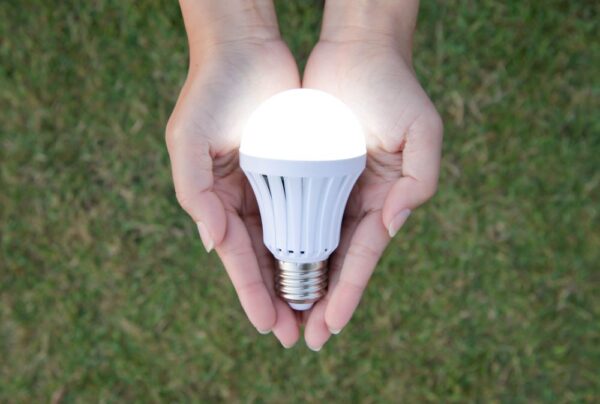Metal halide lights have been the de facto standard for illumination of outdoor and large indoor spaces for more than fifty years. Sports arenas, in particular, have relied on metal halide and similar technology to illuminate playing fields and arenas, but as that technology has aged, the operators of those facilities are seeing its drawbacks. The current trend is to retrofit those facilities with LED lighting systems that provide more effective illumination for athletes and viewers and that improve television broadcasts of all types of events.
Notwithstanding its many years of service, metal halide lighting has many downsides. Most Metal halide fixtures, for example, lose 5% to 10% of their brightness annually, which requires facility operators to replace them frequently. They operate at very high physical temperatures, which translates into significant energy losses, higher operating costs, and faster degradation due to thermal stress. Metal halide fixtures also require ten to twenty minutes of warmup time to come to full illumination. If a metal halide lighting system suffers a power failure (much like the power loss during Super Bowl XLVII in New Orleans), several minutes will elapse before full illumination is restored. Metal halide fixtures served their purpose well when better technology was unavailable, but the new technology of LED lighting systems is changing that paradigm.
In illumination coverage alone, LED systems are far superior to their predecessors. Metal halide fixtures emit light in all directions and require reflectors to focus their illumination across different areas. In contrast, LED fixtures can be controlled more precisely to provide broader and more uniform illumination. For sports arenas, this means that athletes will have a better playing surface and spectators will have a better chance to see all of the action without losing anything in dark or unevenly lit spots.
LED lighting is also more efficient and eco-friendly than metal halide lighting. In general, LED’s provide the same or better illumination than traditional fixtures with less than half of the electrical power consumption. This translates into substantial operating cost savings for sports arena operators. Those savings allow many of those operators to recover the upfront cost of retrofitting a sports arena to LED lighting in under two years. Moreover, LED fixtures have a useful life of at least 50,000 hours, and in some cases up to 100,000 hours. Unlike metal halide fixtures that require frequent replacement due to reduced illumination performance, LED fixtures will remain fully operational for five or more years. Sports arena operators see this benefit in terms of lower maintenance costs over the life of an LED system.
Professional and other sports leagues derive an increasing portion of their revenues from broadcasts of athletic contests. LED lighting systems are a significantly better illumination option for television and other broadcasts because the quality of light they provide is better suited for high definition broadcast technology. LED lighting has a higher color rendering index (CRI) than metal halide lighting. High-CRI lighting is closer to natural sunlight, which renders colors more accurately and gives both athletes and spectators better visual cues for color distinctions and contrasts. This is critical in sports that involve fast-moving objects, such as tennis balls and hockey pucks.
Lastly, LED lighting systems give arena operators unparalleled control over the illumination of playing surfaces and spectator stands. Advanced LED light control systems allow operators to adjust lighting for different athletic contests (e.g. basketball looks better under warmer lights, whereas hockey benefits from cooler lighting). Metal halide fixtures do not provide this level of spectral control.






